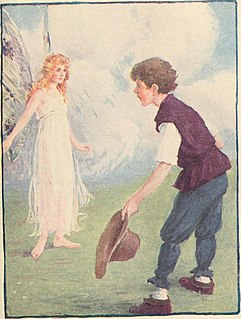 W
WIn Book V of Ovid's mock-epic Metamorphoses, Athis is a young demigod of outstanding beauty from India, son of Limnaee, a nymph of the Ganges.
 W
WCú Chulainn and sometimes known in English as Cuhullin, was an Irish mythological demigod who appears in the stories of the Ulster Cycle, as well as in Scottish and Manx mythology. He is believed to be an incarnation of the Irish god Lugh, who is also his father. His mother is the mortal Deichtine, sister of Conchobar mac Nessa.
 W
WTitusz Dugovics or Titus Dugović was the alleged identity of an unknown Hungarian soldier who was stationed during the Siege of Belgrade by the Ottoman Empire's forces in Belgrade. However, the historical truth of his identity is in some doubt, because all known records that describe him are of highly questionable veracity.
 W
WFionn mac Cumhaill, often rendered as Finn McCool or Finn MacCool in English, was a mythical hunter-warrior in Irish mythology, occurring also in the mythologies of Scotland and the Isle of Man. The stories of Fionn and his followers, the Fianna, form the Fenian Cycle, much of it narrated in the voice of Fionn's son, the poet Oisín.
 W
WGilgamesh (Sumerian: 𒀭𒄑𒉋𒂵𒈨𒌋𒌋𒌋, romanized: Gilgameš; originally Sumerian: 𒀭𒉋𒂵𒈩, romanized: Bilgamesh or Pabilga-mes was a major hero in ancient Mesopotamian mythology and the protagonist of the Epic of Gilgamesh, an epic poem written in Akkadian during the late 2nd millennium BC. He was likely a historical king of the Sumerian city-state of Uruk, who was posthumously deified. His rule probably would have taken place sometime in the beginning of the Early Dynastic Period, c. 2900 – 2350 BC, though he became a major figure in Sumerian legend during the Third Dynasty of Ur.
 W
WAlberto da Giussano is a legendary character of the 12th century who would have participated, as a protagonist, in the battle of Legnano on 29 May 1176. In reality, according to historians, the actual military leader of the Lombard League in the famous military battle with Frederick Barbarossa was Guido da Landriano. Historical analyses made over time have indeed shown that the figure of Alberto da Giussano never existed.
 W
WHé-no is a thunder spirit of the Iroquois and Seneca people. He is also known as Heno, Hino, Hinu or Hinun.
 W
WHercules is the Roman equivalent of the Greek divine hero Heracles, son of Jupiter and the mortal Alcmene. In classical mythology, Hercules is famous for his strength and for his numerous far-ranging adventures.
 W
WHereward the Wake (c.1035 – c.1072) was an Anglo-Saxon nobleman and a leader of local resistance to the Norman Conquest of England. His base, when leading the rebellion against the Norman rulers, was the Isle of Ely in eastern England. According to legend he roamed the Fens, which nowadays covers the parts of the modern counties of Cambridgeshire, Lincolnshire and Norfolk, leading popular opposition to William the Conqueror.
 W
WHuang Shigong is a semi-mythological figure and a Taoist hermit who lived between the Qin Dynasty and Han Dynasty. He gave Zhang Liang with a treatise on military strategy called Huang Shigong San Lue, that allowed Zhang Liang to transform into an adept statesmen and powerful war theorist.
 W
WIvan Tsarevich is one of the main heroes of Russian folklore, usually a protagonist, often engaged in a struggle with Koschei. Along with Ivan the Fool, Ivan Tsarevich is a placeholder name rather than a definitive character. Tsarevich is a title given to the sons of tsars.
 W
WJack is a Cornish and English hero and archetypal stock character appearing in multiple legends, fairy tales, and nursery rhymes.
 W
WIn narratology and comparative mythology, the hero's journey, or the monomyth, is the common template of stories that involve a hero who goes on an adventure, is victorious in a decisive crisis, and comes home changed or transformed.
 W
WThe Jugović brothers, or Nine Jugović, commonly known as the Jugovići, the nine sons of Jug Bogdan, are popular mythological characters of Serbian epic poetry. In poems, the Jugović brothers and their blood brother Miloš Obilić fight to their death in the Battle of Kosovo (1389), dying as heroes. This is based on mythology, in which Miloš Obilić and other knights lost their life "in glory as martyrs". One of the earliest accounts of the battle was the Florentine chancellor Coluccio Salutati who described twelve Christian noblemen who broke through the Ottomans, one of whom killed the Sultan.
 W
WKrabat is a character in Sorbian folklore, also dubbed the "Wendish Faust". First records of him were mentioned in 1839 minutes of the Akademischen Vereins für lausitzische Geschichte und Sprache, but all writings of the association were lost.
 W
WLemminkäinen or Lemminki is a prominent figure in Finnish mythology. He is one of the heroes of the Kalevala, where his character is a composite of several separate heroes of oral poetry. He is usually depicted as young and good-looking, with wavy red hair.
 W
WNayenezgáni is a mythical hero from Navajo mythology who, along with his brother Tobadzischini, rid the world of the Anaye. He is considered by some to be the Navajo god of war, although evidence for this is flimsy.
 W
WNezha is a protection deity in Chinese folk religion. His official Taoist name is "Marshal of the Central Altar" (中壇元帥). He was then given the title "Third Lotus Prince" (蓮花三太子) after he became a deity.
 W
WThe Nine Worthies are nine historical, scriptural, and legendary personages who personify the ideals of chivalry established in the Middle Ages, whose lives were deemed a valuable study for aspirants to chivalric status. All were commonly referred to as 'Princes', regardless of their historical titles. In French they are called Les Neuf Preux or "Nine Valiants", giving a more specific idea of the moral virtues they exemplified: those of soldierly courage and generalship. In Italy they are i Nove Prodi.
 W
WMiloš Obilić was a legendary Serbian knight who is reputed to have been in the service of Prince Lazar during the Ottoman invasion of Serbia in the late 14th century. He is not mentioned in contemporary sources, but features prominently in later accounts of the 1389 Battle of Kosovo as the assassin of Sultan Murad. Although the assassin remains anonymous in sources until the late 15th century, the dissemination of the story of Murad's assassination in Florentine, Serbian, Ottoman and Greek sources suggests that versions of it circulated widely across the Balkans within half a century of the event.
 W
WIn narratology and comparative mythology, the Rank–Raglan mythotype is a set of narrative patterns proposed by psychoanalyst Otto Rank and later on amateur anthropologist Lord Raglan that lists different cross-cultural traits often found in the accounts of heroes, including mythical heroes.
 W
WSuphankanlaya was a 16th-century Siamese princess who was a queen consort of King Bayinnaung of Burma. There are very few historical records of her life, but legends about her are widespread in Thailand. Many Thais revere her as a national heroine or even as a popular deity.
 W
WTyushtya - is a Mokshan epic hero character based on Moksha legends, which mostly survived among Mokshas living in on the right bank of Volga and in Siberia. He serves as a symbol of Moksha's struggle with Russian expansion. Tyushtya is also regarded as the great leader of the Moksha, Erzya and Meschera alliance.
 W
WVäinämöinen is a demigod, hero and the central character in Finnish folklore and the main character in the national epic Kalevala by Elias Lönnrot. Väinämöinen was described as an old and wise man, and he possessed a potent, magical singing voice.